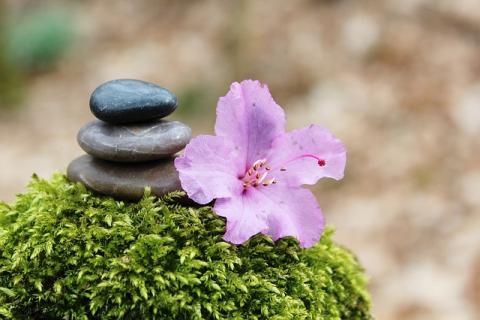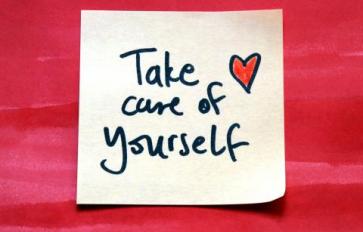
We all know the benefits of meditation--I personally use it for the best (and free!) stress relief, but it can be really intimidating and confusing to get started. If you are scatterbrained by nature, the very process sounds impossible. How do I know if I’m doing it right? Is it working? If you are new to meditation, it can seem like a super power rather than a skill--one that you build with practice. Here are three little things that helped me get started, and have kept me going, even when I was convinced that meditation was a waste of time.
Minutes Matter
Your very first attempt at meditation probably lasted just a minute or two before you mentally started bouncing all over the place--from doctor’s bills to long-term goals to that stupid thing you said at work last week. Those first few minutes count--they are what you’re going to build your practice on, minute by minute.
When it comes to free time, not everyone can afford an hour, but almost everyone has 15 minutes somewhere, so starting small is a goal easily kept. Just sitting quietly for a few minutes can reduce stress and anxiety, and it’s especially soothing if you have a busy mind naturally. Have 20 minutes between appointments? Instead of scrolling through your social media in the parking lot, try just connecting with what’s going on around you instead.
Changing Your Focus is Fine
I’ve read a lot of material that simply tells a beginner to “clear their mind” without explaining exactly how to do that. Then to focus on your breathing--wait, wasn’t I just clearing my mind?! When you are first starting with meditation, think of the goal being just achieving relaxation on command. When you start to drift over to thoughts that stress you out, just re-center your attention to your breath or your posture. Just like counting sheep, the rhythmic attention to your breath will calm you and keep your fluttery mind on point.
Do you get bored with breath-centered meditation? If you flat out have trouble focusing, a fun beginning strategy is to practice on your surrounding (with your eyes open) using an object. It could be anything--a geode, an orchid, a statue, anything really. Practice focus by exploring that object inside and out, without touching it at all. Think about the color, trace the contour, the way it diffuses light, the features of it, but just what you can see presently. I do this from time to time to get back into the habit of observation.
After you can comfortably control your attention to your breath, you can move your focus to your posture, the wind on your face, the smells and sounds around you, whatever helps you experience the present. Clearing your mind takes a lot of practice; don’t expect to achieve it for very long on your first try!
Location, Location, Location
No matter your location, you can do better than sitting at the kitchen table or slumped on the couch while trying to get some inner peace. Having a special, dedicated place for you to go to can really elevate your practice--whether it’s a space you create or not. Your back porch, garden, or if you don’t have the space at home, maybe a more secluded spot in a park. If you live in an urban area, don’t despair--you can very much create a special place, just in your bedroom. Change the lighting--either a diffused lamp or a candle is perfect, maybe burn some incense or warm essential oil, even add music to create an entirely different feel, one that’s perfect for relaxation.
Meditation is a fulfilling journey to embark on. Build slowly, and notice the improvements it makes in your life. Connecting with the world around you is a great way to be calmer and more relaxed. Meditation teaches you to more deliberately forge this connection.
Have you tried meditation? Share your story below!








